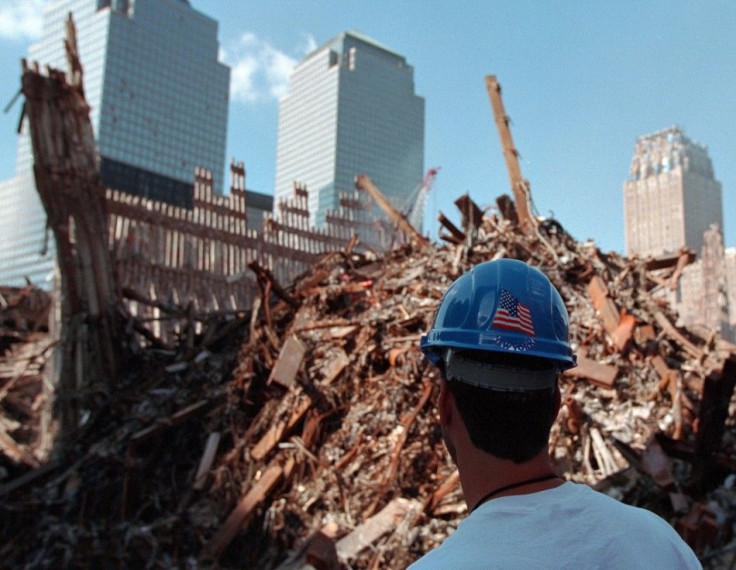9/11 Health Toll Still Hazy After 11 Years

The September 11th attacks wounded the American landscape and psyche. Some of the wounds, even after some healing, leave obvious scars - a new glass tower rising in lower Manhattan; a consecrated field in Pennsylvania; 2,983 names incised into a bronze parapet.
Other scars from 9/11 are more subtle, and less visible. It's still unclear just how many emergency workers and New York City residents were afflicted by respiratory illnesses caused by breathing in some of the vast plume of ash released by the towers' collapse. The dust cloud kicked up from the Twin Towers was a mixture of toxic debris: pulverized concrete, jet fuel, plus tiny bits of glass, lead and asbestos, to name but a few ingredients.
The potential pool of people afflicted by 9/11-related health problems is large. Between 40,000 and 90,000 emergency workers and volunteers spent time sifting through the remains at Ground Zero, and were exposed to toxic materials. That doesn't even count the number of residents in the reach of the ash plume.
One 2010 study published in the New England Journal of Medicine examined 13,000 FDNY rescue workers that worked at the WTC sometime in the first two weeks after the attack. The researchers found that rescue workers' lungs performed about 10 percent worse in the year after the attacks. Their lungs also failed to recover.
By 2010, amongst all firefighters and emergency workers exposed to potential toxins, about 5,000 had persistent complaints like sore throat, wheezing or coughing. 1,000 firefighters or emergency workers suffered from asthma or chronic bronchitis that made them eligible for permanent respiratory disability, according to the NEJM paper.
A large group of 9/11 first responders and cleanup workers eventually sued the City of New York, claiming they were not given proper ventilators. In November 2010, the plaintiffs of that case agreed to a settlement that will net more than 10,000 workers payments totaling around $625 million. A month later, Congress passed the $4.3 billion James Zadroga 9/11 Health and Compensation Act, which covers medical care for workers sickened by the fallout from the World Trade Center. The bill was named for an NYPD officer and 9/11 responder that died from a respiratory illness in 2006.
A more recent scientific study paved the way for the addition of more than 50 kinds of cancer to the list of illnesses that can be covered by the World Trade Center Health Program, which was created by the Zadroga bill.
Researchers from the Albert Einstein College of Medicine in New York examined nearly 10,000 men that were employed as firefighters on 9/11. They reported in the Lancet in September 2011 that they found a modest increase in the number of cancers among the firefighters exposed to material from the World Trade Center versus non-exposed firefighters.
However, the researchers wrote that they "remain cautious in our interpretation of this finding because the time since 9/11 is short for cancer outcomes, and the reported excess of cancers is not limited to specific organ types."
The environmental impact of the 9/11 attacks seems to be much less of a weight than the impact on human health. However, there's evidence that federal environmental agencies may have understated the impact of the attacks in the early aftermath, under pressure from above.
In 2009, the Environmental Protection Agency's internal watchdog, Inspector General Nikki L. Tinsley, said in a report that the agency's initial response to the WTC collapse was molded by the White House and not by proper air-quality analysis.
"Competing considerations, such as national security concerns and the desire to reopen Wall Street, also played a role in EPA's air quality statements," Tinsley said.
© Copyright IBTimes 2024. All rights reserved.





















